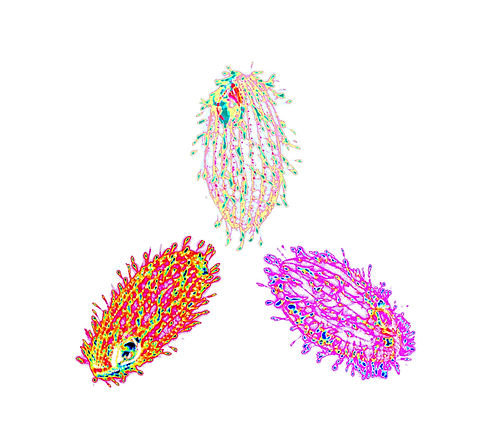
Past and ongoing projects

10/18/2021
Fungi feeling each other out
Here is my first pictures of parasitic fungus (genus Escovopsis: bottom left) interacting with fungi isolated from the fungal farms of ants (Cyphomermex Mulleri).
10/14/2021
Resident farming ants
Here is a short video of Trachymermex ants tending to their fungus garden. They have been living in the lab for a few months. There is supposed to be a queen hiding somewhere in here!

6/6/2019
The oral appratus
This is a fluorescence image of Tetrahymena thermophila microtubules and basal bodies converted into a heatmap.


These are the different strains of Tetrahymena thermophila stained for basal bodies (centrioles) and microtubules. Each cell's fluorescence signal was then converted into a different type of heatmap.
I made this art to signify diverse perspectives, orientations, and life histories.
Fun fact: T. thermophila has 7 sexes (mating types).



_tif.png)
_tif.png)